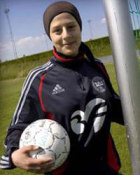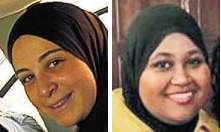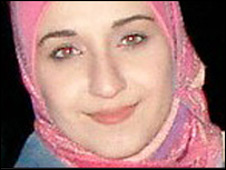 ODENSE — Zainab al-Khatib commanders the attention of the women national soccer team fans not just with her unmistaken talents, dribbling skills and spectacular goals but also her colorful hijab. “I’m so glad that I set a precedent in Denmark,” 15-year-old Khatib, the star of the national team for girls under 16, told IslamOnline.net.
ODENSE — Zainab al-Khatib commanders the attention of the women national soccer team fans not just with her unmistaken talents, dribbling skills and spectacular goals but also her colorful hijab. “I’m so glad that I set a precedent in Denmark,” 15-year-old Khatib, the star of the national team for girls under 16, told IslamOnline.net.
She was recently chosen to join the team after receiving permission from the Danish Football Association (DBU) to be the first ever hijab-clad girl to play for a national team, not only in Denmark but across Europe.
Khatib, who only started her professional football career two years ago, is now the striker for the national team. She has led her team to an impressive victory in their latest match against Sweden, scoring a wonderful goal.
“Zainab has a strong personality and her attitude is always positive and inspirational in and outside the court,” her coach Troels Mansa told IOL. “She is one of my best players and I am so glad to be her coach.”
Khatib believes all the fuss over hijab is meaningless. “It is always wonderful to be able to strike a balance between your religious duties and your hobbies.”
She says her teammates are very supportive. “They have welcomed me into the team and I faced no obstacles. During our match with Sweden, some players were surprised to see my hijab but nobody commented.”
She wants her contribution to the team to demonstrate the willingness of Danish Muslims to integrate into society. “I see myself as a Danish Muslim who effectively contributes to her society and will be proud to represent my country abroad.”

 A disgraceful thing happened at Detroit’s Joe Louis Arena earlier this week.
A disgraceful thing happened at Detroit’s Joe Louis Arena earlier this week. “Discrimination in all its forms is unacceptable. The Zeitgeist is Islamophobia and given this fact we applaud young Bushra Noah’s determination to seek justice.
“Discrimination in all its forms is unacceptable. The Zeitgeist is Islamophobia and given this fact we applaud young Bushra Noah’s determination to seek justice. The owner of a hair salon has been ordered to pay £4,000 compensation to a Muslim stylist who was turned down for a job because she wears a headscarf.
The owner of a hair salon has been ordered to pay £4,000 compensation to a Muslim stylist who was turned down for a job because she wears a headscarf.